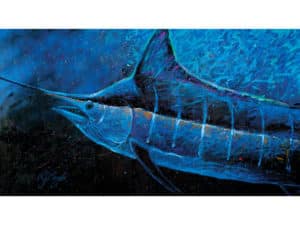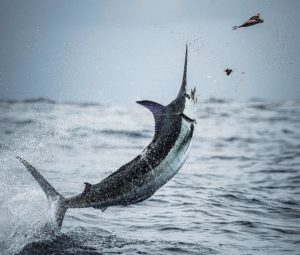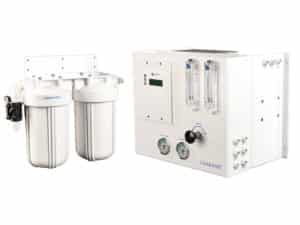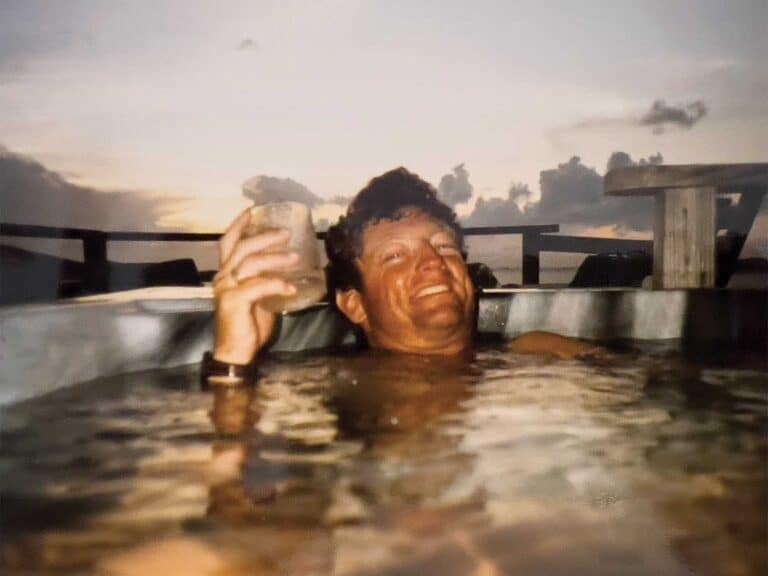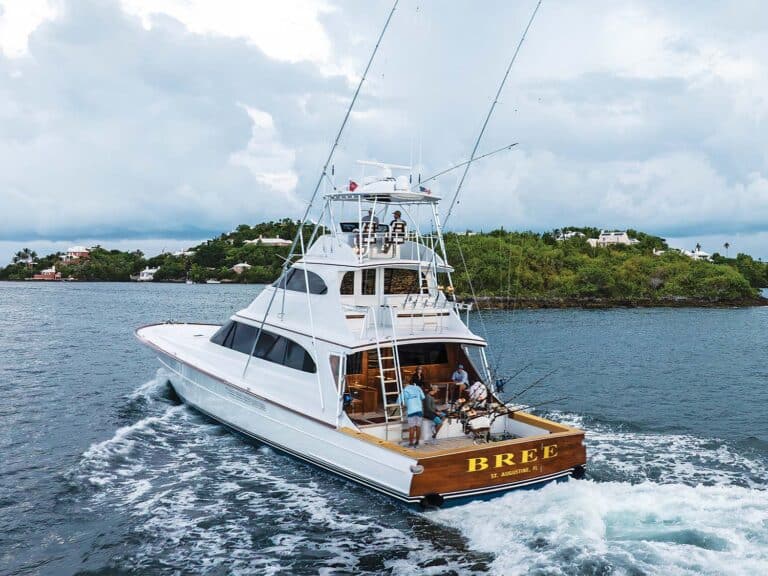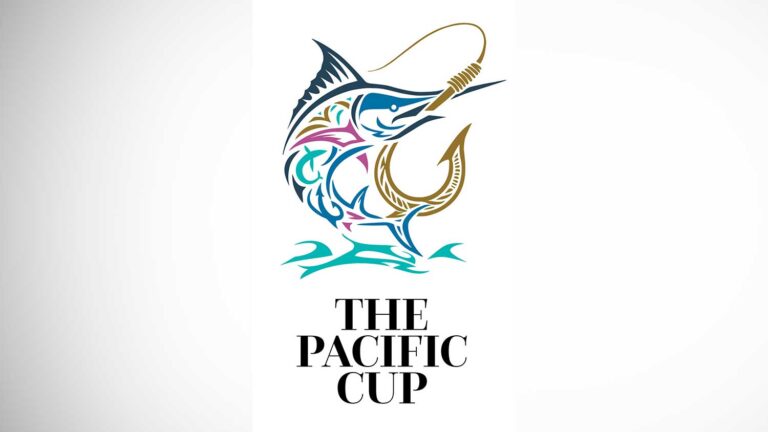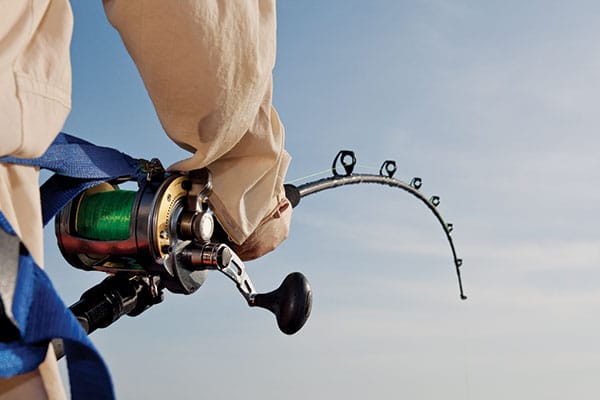
curved butts
Fiberglass resins and epoxies have been around since the 1930s, but the material did not make its way into the fishing industry until after World War II. In the 1950s, glass-impregnated bamboo rods were commonplace. “These are the first rods to stand up to a beating,” writer Joe Brooks said. The days of bamboo fishing rods were numbered, however, for several reasons, the most significant being the U.S. government’s embargo on Chinese imports, such as Tonkin cane, that was put into effect during the 1950 Korean conflict.
The creation of tubular fiberglass is an innovation that began with Shakespeare, and the company was working on such designs even before World War II. The process was finally perfected during the war, when it was used to make radio antennas on aircraft and tanks. Dr. Arthur Howald, technical director of the Libby-Owens-Ford Glass Co., patented his process for making tubular fiberglass in 1946. Looking for new uses for tubular fiberglass after the war, Howald, a fisherman, thought that fiberglass could become a viable alternative to bamboo, and he approached Shakespeare about it. In California, Dr. Glenn G. Havens of the National Research and Manufacturing Company (NARMCO) developed a different proprietary process for making tubular fiberglass over tapered mandrels. In the ’40s, he started building Conolon rod blanks, which eventually were absorbed by Garcia.
Capt. Ron Hamlin recalls that fiberglass was a hard sell at first. “The first rods they came out with were longer and whippier than we were used to. Being longer than the conventional 7-footers we fished put more pressure on the angler. I remember fishing the Masters [Invitational Sailfish Tournament] off Palm Beach around 1960 with a California guy that was using them and not being a bit impressed. The rods had so much flex, he was having a hard time hooking the fish.” By the end of the decade, manufacturers had figured out the kinds of rod action required for East Coast fishing, thanks to prominent rod builders like Fred Heidi of Palm Beach and Karl Carman in Miami, and fiberglass rods got shorter and stiffer.
With the improved parabolic action, blue-water anglers — especially tuna fishermen — became converts. Tuna guys don’t like to see a bend, Capt. Bill Harrison says. By using shorter, stiffer fiberglass sticks every time they raised the rod, they also raised the fish, he says. Thus, fiberglass became the unbreakable rod everyone had been searching for — it was a material that, unlike laminated wood and bamboo, would not take a set and was so durable that maintenance was a thing of the past. With the exception of tougher S-glass and E-glass materials, fiberglass rod-building processes have changed little since the ’40s. Almost 60 years later, it’s still the go-to rod for heavy-tackle use.
Karl Carman’s Biscayne Rod Manufacturing and Lamiglas started up at opposite ends of the country soon after World War II — Biscayne in Miami and Lamiglas in southern Washington. A major manufacturer of fiberglass and graphite-composite rods, Lamiglas started up in 1951, building tubular and less-expensive solid-fiberglass rods, company president Dick Posey says. “At first, Lamiglas sold blanks to other manufacturers and custom rod builders to finish, and while that is still a big part of our business, today we build finished fiberglass and graphite-composite rods,” Posey says.
Carbon Fiber
High-tensile carbon fiber, or graphite, was developed by the sporting goods and aerospace industries. Along with Fenwick, the company that generally gets credit for building the first graphite-composite fishing rod in 1973, Lamiglas, Shakespeare and Garcia-Conolon were among the pioneers that brought hollow graphite-composite rods to the market in the early ’70s. Graphite is six times lighter than fiberglass, and early graphite designs were brittle and would break; that’s exactly what the first rods would do when a big fish was on or the boat hit an unexpected bump. Prior to Posey buying Lamiglas in 1977, a young product engineer named Gary Loomis worked for the Washington-based company, handling sales and R&D. Loomis could see that graphite was not as strong as fiberglass, but what he liked about the material was how sensitive it was. He was convinced that graphite could be the future, and with just $250 to spend on developing a graphite rod for Lamiglas, he headed to the Seattle library to learn about the material.
Loomis thought that if anyone was currently using graphite, it would be Boeing, so he headed over to Boeing’s employee gate in Seattle and asked every worker coming off a shift if he or she knew about it, or knew someone who was working with it. Eventually, Harry Mathison, a composite engineer, came out and agreed to meet with him. Over the next year, Mathison helped Loomis and Lamiglas develop deflection codes and computer programs to manufacture different weight composite blanks, rods that did not break like some other manufacturers’ did, Loomis says. Thus, Lamiglas became the first to build reliable graphite rods. Loomis eventually left Lamiglas to start his own company, G. Loomis Rods, and built blanks for OEM customers like Biscayne Rods, a business that he sold to Shimano in the late ’90s. More recently, Loomis started North Fork Composites, building golf shafts and rod blanks, along with finished rods, under the Edge label. Today he’s still considered to be one of the most innovative rod engineers, and Loomis works closely with clients like Peter B. Wright and Karl Carman’s son, Ed, at Biscayne Rods, developing new blanks for specialty fishing, such as pitch-baiting, standup fishing and deep jigging, spokesman Steve Pitcock says.
Biscayne Rods
When Ed Carman started building rods with his dad and brother, Ken, in the 1960s, Biscayne Rods was building solid-glass rods under the Biscayne Rods label and for Tycoon Fin-Nor, which, after merging with Fred Greiten, started a line of fiberglass big-game rods. “In those days, we bought our blanks from Shakespeare,” Carman says. “By the 1970s, we’d switched over to tubular fiberglass.” In the years since, he says, the company has been building fiberglass rods based on its own custom-built mandrels, or shapes machined as KC Rods by Lamiglas in Woodland, Washington. KC, along with Lamiglas and Fenwick, was one of the first producers of E-glass rods. The graphite standup blanks, soft-tip pitch rods and trendy new stiff-action deep-drop blanks from Biscayne Rods are based on blanks built by North Fork Composites, according to its proprietary designs.
Like many custom rod builders, Drew Thompson of Rods by Dru started out building rods as a kid because he couldn’t afford a custom rod. When friends started asking him to build rods for them, he got into the business. By high school, he was building rods for high-profile captains like Cookie Murray of Cookie Too. Over the past four decades, he’s become one of South Florida’s best-known saltwater rod specialists, with a client list that spans the globe. After graduating from college, Thompson got his start working as a Murray Brothers custom rod builder in 1986, a job that entailed collaboration with some of the biggest names in sport fishing, including the late Capt. Ed Murray. “Because they were perfectionists, the Murrays were great people to start out working for,” Thompson says. “I learned to be meticulous about my guide placements and thread counts.”
Curved Butts
Around 1987, Ed Murray came up with an idea for a curved-butt design mounted behind the reel, which allowed for freer use of the legs and more leverage. “It was pretty radical for the time,” Thompson says. “Had it been machined from aluminum instead of corrodible chrome-plated brass, it might have succeeded.” Although the Murray Brothers’ curved-butt design eventually fell by the wayside, it was a learning experience for Thompson, who, today, is recognized for building some of the strongest big-game rods in the industry, and for his unique finishes. While still in his 20s, Thompson became known for his artsy splatter-pattern finishes on rods and golf-club shafts. He still does them on request, but is better known for the classy high-end wraps he does using natural materials like teak and abalone. Thompson’s custom-lathed teak foregrips and abalone-enhanced wraps are signature Rods by Dru items, yet both are just skin deep. “The essence of what we do is to build the best action rod for the job,” says Thompson, who spends up to six weeks a year crewing on big-game boats to stay at the top of his game.
Recently, he’s worked with Isla Mujeres Capt. Anthony Mendillo and Dr. Molly Lutcavage and her team from the University of Massachusetts Large Pelagics Research Institute, catching and tagging giant bluefins off the Canadian Maritimes. After the first trip, in 2011, Thompson redesigned the team’s fishing rods, making them stiffer and heavier so that fish could be landed in one-third of the time and with less stress. Having built heavy-duty rods for Capt. Cookie Murray, who has caught hundreds of giant bluefins on them, Thompson says that even though what they were using was rated as a 130, the rods were not up to the job. They needed shorter and fatter rods with less bend. Thompson’s rods decreased fight times by almost a third and resulted in up to two more fish caught per day — it’s an example of the kind of results that can be achieved by crafting the right rod for the job.
The right rod for the job is how stubby, high-leverage standup fishing rods came to be in the ’60s, after California Tackle of Carson City, California, introduced the design for taking big fish on elbow-to-elbow long-range fishing trips off Mexico. Standup tackle in the years since has been modified for billfishing and the capture of 1,000-pound blue marlin by anglers such as Tracy Melton and Marsha Bierman.
Increasingly, captains, such as Skip Smith, Ray Rosher and Rich Barrett, have sought out rod-building experts for special-purpose big-game rods.
In the mid-1980s, Smith collaborated with Scotty Boyd of Bill Boyd’s Custom Tackle in Fort Lauderdale to design ultralight pitch rods, which, over the next decade, produced more than 85 world records for anglers. It was a process of trial and error, Smith says. “The first rods we built seemed to break the line while fighting a fish.” The breakthrough came during a trip to Piñas Bay in 1986, when Frenchman Marc Giraud fished Hooker with Smith. “Marc had caught a lot of big fish on 2-, 4- and 6-pound tackle and seldom broke a line,” Smith says. “I noticed his rods were longer and had many more guides than ours, so I asked Scotty to duplicate them.” After trying the longer rods with more guides, Smith figured out that it was not the length so much as the added guides that made the difference. In the end, he settled on a 6-foot rod with 12 to 14 guides as the perfect recipe. The added guides, Smith says, evened out the pressure and friction of the light lines he was using. With the rod at 6 feet, it made it easier for the mate to grab the leader. Boyd and Smith were also responsible for developing the short teaser rod for pitch-baiting.
Because of breakage, it took a while for graphite rods to catch on in saltwater fishing, Drew Thompson says. “With a small nick, they would break,” he says, which is why most captains were reluctant to try the rods. “If an 80- to 130-pound-class graphite-composite rod was to break under pressure, someone would get hurt,” Thompson says. The breakthrough in the development of saltwater graphite composites came in the 1990s with Leon Todd, the owner and designer of Calstar Rods, and his design of a graphite rod with a 2-foot fiberglass foresection and tip. With its lightweight graphite butt section and forgiving fiberglass rod tip, it was a major breakthrough for standup anglers and anyone fishing less than 50-pound-class tackle, Thompson says.
Although rod manufacturers don’t see major innovations on the horizon, rod design is constantly evolving. With the introduction of circle hooks, crews and rod builders have had to rethink rod action for better hook-set. Hooking a fish with J-hooks, you want a shorter, stiffer-action rod to drive the hook home, Thompson says. Hooking a fish with a circle hook, although it’s safer for the fish because it tends to lodge in the jaw, is a slightly slower process than it is with a J-hook, he explains. Skilled anglers and/or crews using the same stiffer rods have been able to adapt by slowing things down in order to allow the circle hook to position itself. The issue is that the first instinct of newer, less-experienced anglers is to set the hook hard. This is why many captains are going to longer, softer-action rods that produce a slower strike and better hookup ratio when baiting sailfish and white marlin with circle hooks, he says.
Comparing the two rods, the typical J-hook rod is going to be 6 feet, 11 inches with a 20- to 40-pound blank. The new normal for circle-hook rods is a 16- to 25-pound-class blank that’s 7½ feet long, with a moderate taper that bends from the tip to the first rod guide, Thompson says. “The big arc really has improved catch rates with circle hooks.”
Great rods like Tycoon’s Betsy start with a good foundation, or rod blank. The components and wraps that draw attention are superfluous, like trinkets and baubles on a pig, Steve Pitcock says. Like a three-legged stool, good rods are created through great design, quality materials, and great machining and/or equipment. The right combination can win or lose a tournament or a record-size catch.
